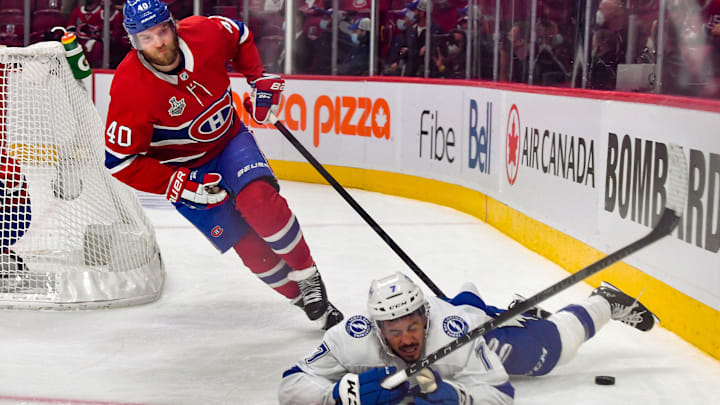The tripping penalty in hockey is probably the most straightforward of the infractions. If the opposing player has the puck and you take him down to the ice with your stick or feet into his legs, there's a good chance you are getting a tripping penalty. If you use your knee to do it, the referees could give you a kneeing penalty. If you take a player down from behind by using your feet, it may be called a slew-footing penalty. However, the most common interpretation is "tripping".
The NHL Rulebook describes tripping as "A player shall not place the stick, knee, foot, arm, hand or elbow in such a manner that causes his opponent to trip or fall. Accidental trips which occur simultaneously with a completed play will not be penalized. Accidental trips occurring simultaneously with or after a stoppage of play will not be penalized."
There is also a scenario where a player "trips" or "hooks" an opponent on a breakaway and the opposing player receives a penalty shot. If the player has a clear path to the net and the defending player takes away a scoring chance illegally, the referee will point to the center ice and give the victim a free breakaway on the goalie.
If you look past the theatrics occuring after the infraction, you'll see this is a picture-perfect example of a tripping penalty. MacKinnon uses his stick to take away Kaiden Guhle's ability to skate through the neutral zone.
The above video doesn't involve a Montreal Canadiens player, but it's an example of an infraction that maybe could have been a kneeing penalty instead. Brad Marchand uses his knee to take away the ability to skate through the center of the ice with the puck. The video shows how similar tripping is to the kneeing infraction, so referees can't go wrong with calling either.
